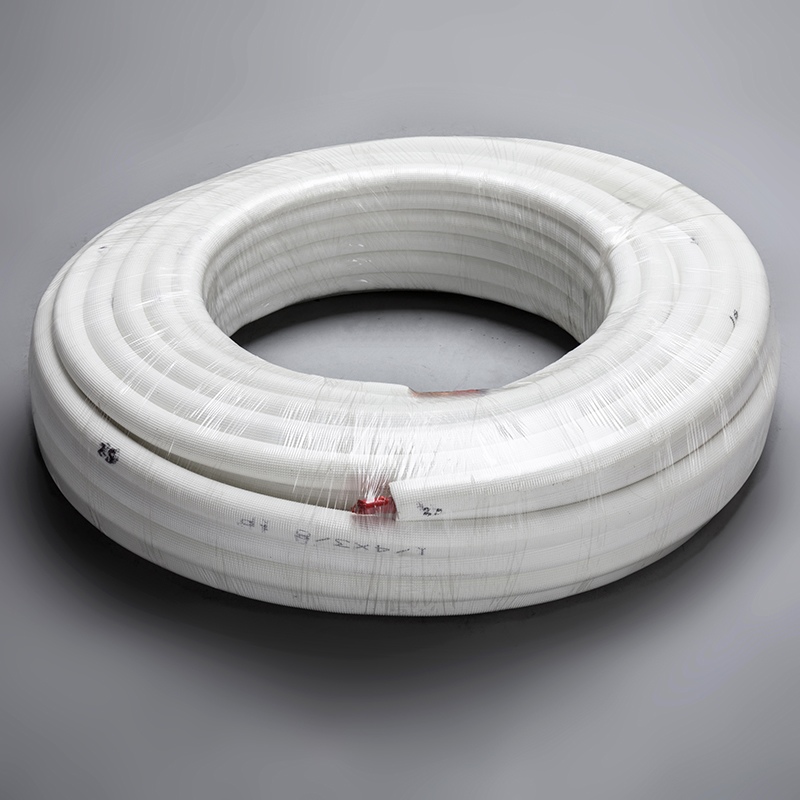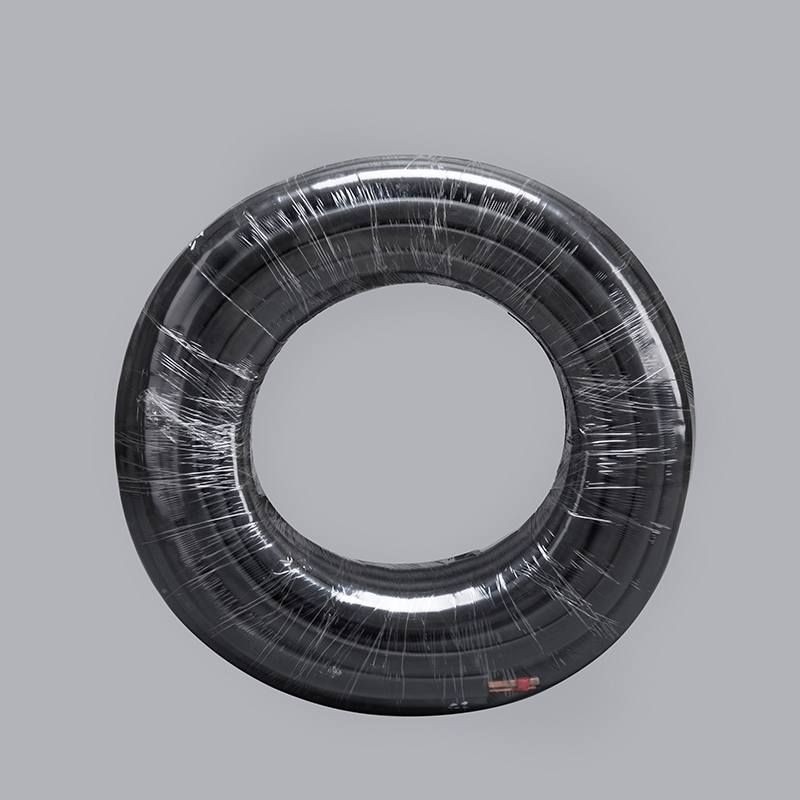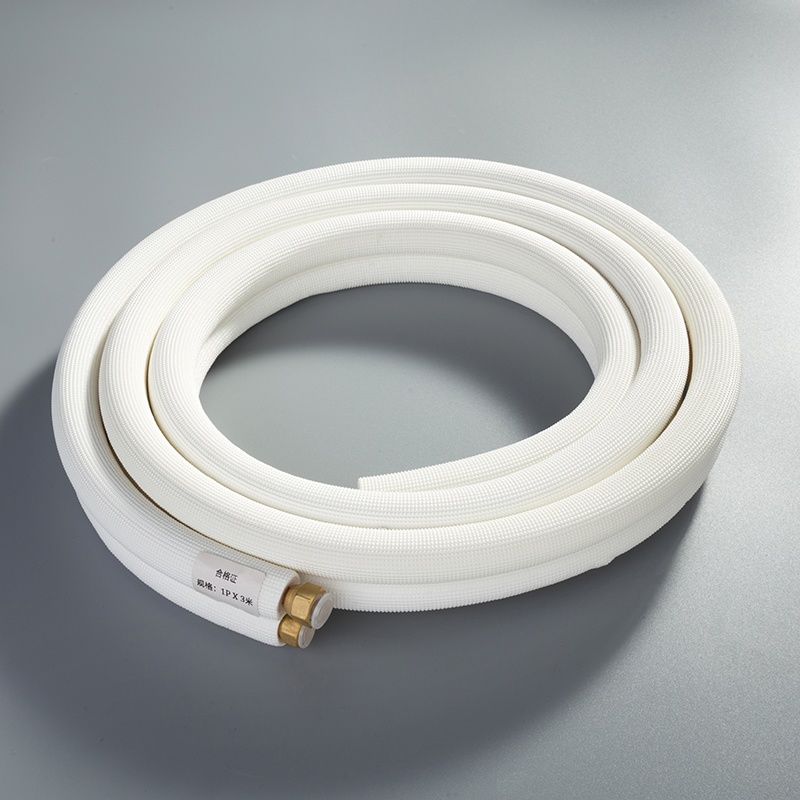A Complete Guide to Aircon Copper Pipe Selection

Choosing the right aircon copper pipe is very important. It helps your air conditioner work well and last longer. A good pipe keeps cooling strong and prevents system problems. Think about the pipe's type, size, and material to fit your aircon. Copper pipes are strong and do not rust, so they are great for different places.
More people want energy-saving air conditioners now. The copper pipe market may grow from USD 5.2 billion in 2023 to USD 9.1 billion by 2032. This shows how important good cooling systems are as the world gets hotter. Asking HVAC experts for help ensures your pipe choice follows rules and improves efficiency.
Key Takeaways
Picking the right copper pipe—Type K, L, or M—helps your air conditioner work well and last longer.
Copper pipes are great for transferring heat, staying strong, and saving energy. They are a good choice for air conditioning systems.
Always check your aircon's size and refrigerant type to choose pipes that can handle the needed pressure and temperature.
Cleaning and checking copper pipes often stops leaks and helps your air conditioner last longer.
Asking HVAC experts makes sure you follow rules, avoid big mistakes, and keep your aircon working its best.
Understanding Aircon Copper Pipes

Types of Copper Pipes for Air Conditioning
When picking copper pipes for air conditioners, there are three main types: Type K, Type L, and Type M. Each type works best for certain uses.
Type of Copper Pipe | Wall Thickness | Strength | Best Use |
|---|---|---|---|
Type K | Thickest | Very strong | High-pressure systems |
Type L | Medium | Good balance | Everyday use |
Type M | Thinnest | Less strong | Low-pressure systems |
Type K pipes are the strongest and work well in high-pressure setups. Type L pipes are a mix of strength and cost, making them great for homes and businesses. Type M pipes are thinner and cheaper, used in low-pressure systems where saving money matters.
Picking the right copper pipe helps your aircon work better and last longer. Always check what your air conditioner needs before choosing.
Benefits of Using Copper Pipes in Aircon Systems
Copper pipes have many advantages, making them a top choice for air conditioners. These include:
Excellent heat transfer properties: Copper moves heat well, helping aircons cool and heat efficiently.
Durability and corrosion resistance: Copper lasts long and doesn’t rust, preventing leaks and breakdowns.
Health benefits: Copper kills bacteria and fungi, keeping air conditioners cleaner.
Energy efficiency: High-quality copper pipes save energy and lower running costs.
The International Energy Agency (IEA) says by 2050, most homes worldwide will have air conditioning. This shows why strong and efficient materials like copper are key for future cooling needs.
Why Copper is the Preferred Material for Aircon Systems
Copper is the best material for air conditioners because of its great features. It transfers heat well, keeping cooling systems working efficiently. Copper is also tough and lasts a long time.
Copper pipes are flexible and used in many aircon parts, like heat exchangers and coils. This flexibility improves energy savings and system reliability.
Tip: Copper pipes may cost more at first, but they last longer, save energy, and keep systems healthier. This makes them a smart choice for your air conditioner.
Factors to Consider When Choosing the Right Copper Pipe
System Capacity and Refrigerant Compatibility
Picking the right copper pipe starts with knowing your aircon's capacity and refrigerant type. Air conditioners work under specific pressures and temperatures, so pipes must handle these conditions well. For example, refrigerants like R-410A or R-22 need pipes that can manage over 400 psi and temperatures from -40°C to 204°C. This keeps the system safe and efficient.
Copper pipes for aircons must be very pure, usually over 99.9%. High purity improves performance and stops contamination, which could lower efficiency. Pipes should also meet industry rules like ASTM B280. These rules ensure the pipes are safe and reliable for HVAC systems.
Key Point | Description |
|---|---|
Durability | Handles pressures above 400 psi and extreme temperatures. |
Purity Level | Needs over 99.9% purity for best performance. |
Compliance | Meets ASTM B280 standards for safety and reliability. |
Always match the pipe's features to your aircon's needs. This helps the system work well and avoids costly repairs.
Installation Environment and Climate Considerations
Where you install copper pipes affects how well they work and last. Copper is strong, but some conditions can reduce its efficiency. For instance, water with a pH below 6.5 can cause corrosion, releasing copper ions. This often happens in areas with private wells and poor water quality.
Corrosion shortens pipe life and can harm health. Too much copper in water may lead to liver or kidney problems. To prevent this, check the installation area carefully. If water quality is bad, use protective coatings or consider other materials.
Avoid installing copper pipes in places with water pH below 6.5.
Low pH water, common in private wells, can cause corrosion.
High copper levels in water may lead to health issues like liver damage.
By checking the environment and climate, you can keep your aircon system safe and reliable.
Durability, Corrosion Resistance, and Budget Constraints
Durability and corrosion resistance are key when choosing copper pipes. Copper doesn’t rust, making it a good long-term option. Type K pipes are the strongest, with thick walls for high-pressure systems. Type M pipes are thinner and cheaper but may not last as long in tough conditions.
Your budget also matters. Strong copper pipes cost more upfront but save money later. Durable pipes need fewer repairs and replacements, cutting costs over time. Using corrosion-resistant pipes keeps your aircon efficient and reliable.
Tip: Spend wisely on durable pipes. They cost more now but save money later.
Think about durability, corrosion resistance, and your budget when picking copper pipes. This ensures your aircon works well and lasts longer.
Compliance with Industry Standards and Guidelines
When choosing copper pipes for your aircon, follow industry rules. These rules ensure your system is safe, reliable, and works well.
Why Industry Standards Are Important
Industry rules protect both you and your aircon system. They make sure copper pipes are strong, pure, and durable. Pipes meeting standards like ASTM B280 are tested for high pressure and heat. This lowers the chance of breakdowns and expensive repairs.
Note: Pipes without proper certification can cause leaks or failures. Always check for approved labels before buying.
Key Standards for Copper Pipes
Different organisations set rules for aircon copper pipes. Learn about these important standards:
ASTM B280: Sets rules for strong, pure copper pipes in HVAC systems.
ISO 9001: Ensures pipes are made with consistent quality.
EN 12735: Focuses on copper pipes for cooling and refrigeration.
Standard | Focus Area | Benefits |
|---|---|---|
ASTM B280 | Strength and purity | Stops leaks and contamination |
ISO 9001 | Manufacturing quality | Ensures reliable performance |
EN 12735 | Refrigeration compatibility | Boosts system efficiency |
How to Check for Compliance
To check compliance, look at the pipe’s label and documents. Manufacturers often mark products with certifications like ASTM, ISO, or EN. These markings confirm the pipe meets the required standards.
If unsure, ask an HVAC expert. They can verify if the pipes are suitable for your aircon system.
Advantages of Following Standards
Using pipes that meet standards keeps your aircon safe and efficient. Certified pipes last longer and need fewer repairs. They also prevent refrigerant leaks, helping the environment.
Tip: Always pick pipes with recognised certifications. They protect your aircon and save money over time.
Choosing the Right Copper Pipe Size

Why Pipe Size and Wall Thickness Matter
Picking the right copper pipe size is very important. The size and wall thickness affect how well the system works. Thicker walls are stronger and handle more pressure. However, they can slow cooling and change temperature control.
Feature | Explanation |
|---|---|
Wall Thickness Range | Between 800 mm and 2000 mm |
Pipe Distance Options | 500 mm, 750 mm, and 1000 mm |
Best Cooling Ratio | A d/t value of 1.0 helps heat move better. |
Temperature Effect | Thicker walls get hotter and need more time to cool. |
Pipe Placement | Pipes fit with cables, affecting heat movement and layout. |
Pipe Spacing Impact | Different distances change the wall's average temperature. |
When choosing pipe sizes, balance thickness with cooling efficiency. Measuring properly ensures good heat transfer and longer system life.
Pressure Levels and Refrigerant Needs
Pressure levels and refrigerant type are key for pipe selection. Pipes must handle the pressures and temperatures of your aircon system. For example, R-410A refrigerant needs pipes that work under high pressure and extreme heat or cold.
Correct pipe length helps refrigerant change between gas and liquid smoothly.
Good oil return stops compressor damage and keeps the system reliable.
Short pipes may cause overheating or overcooling, lowering efficiency.
Right pipe length keeps refrigerant flow steady and avoids turbulence.
Matching pipe pressure ratings and refrigerant needs ensures safe and efficient aircon performance.
Calculating Cooling Needs for Better System Efficiency
Calculating cooling needs helps pick the best copper pipe sizes. These calculations check how much cooling your space requires and help you choose pipes that work well.
Air Conditioning Design Software calculates cooling needs based on room size and insulation.
Cooling Load Software checks heat gain and loss to match pipe size to system demands.
Using these tools avoids pipes that are too big or small. This prevents wasted energy and keeps your system running efficiently. Proper calculations make sure your aircon works at its best.
Professional Guidance and Standards in Aircon Copper Pipe Selection
Role of HVAC Technicians in Pipe Selection
HVAC technicians are important for choosing the right copper pipes. They check your aircon's needs, like size, refrigerant, and environment. Their skills ensure the pipe can handle the system's pressure and temperature.
They also look at where the pipes will be installed. Things like humidity, water quality, and exposure to harmful elements are considered. This helps stop problems like rust or leaks. Trusting their advice avoids mistakes and keeps your aircon working well.
Tip: Always ask a certified HVAC technician for help with pipe installation. Their advice ensures your aircon works well for a long time.
Adhering to Industry Standards and Avoiding Common Mistakes
Following rules is very important when picking copper pipes for aircons. These rules make sure pipes are safe and installed properly. For example, ASTM B280 ensures pipes are strong and pure, stopping leaks or failures.
Mistakes often happen when rules are ignored. Common errors include:
Using the wrong pipe size, causing leaks or pressure issues.
Mixing materials that don’t work well together, leading to rust.
Confusing pipe measurements, which causes bad connections.
Sticking to rules avoids these problems and keeps your aircon running smoothly. It also helps during inspections or building checks.
Ensuring Compatibility with Air Conditioner Brand Specifications
Each aircon brand has its own pipe requirements. Using the wrong pipe can cause problems or damage the system. For example, some brands need pipes with certain thicknesses or pressure ratings for their refrigerants.
Always check the manufacturer’s instructions. These explain the right pipe size, material, and how to install it. If unsure, ask an HVAC technician to confirm the pipes match your aircon.
Note: Using the wrong pipe might cancel your aircon’s warranty. Always double-check the details before installing.
Maintenance and Troubleshooting for Aircon Copper Pipes
Tips for Maintaining Copper Pipes in Aircon Systems
Taking care of copper pipes helps your aircon work well. Regular checks can find problems early and save money on repairs. Look for cracks or leaks on the pipes. Clean them often to remove dirt that might affect cooling.
Keep the pipes dry to stop rusting. Water can weaken the pipes and make them wear out faster. Use insulation to protect pipes from heat, cold, and moisture. This is especially important for pipes outside.
Tip: Get a professional to check your aircon once a year. They can find hidden issues and keep your system running smoothly.
Identifying and Resolving Common Issues
Aircon pipes can have problems like leaks, blockages, or rust. Leaks happen from wear or bad installation. Blockages come from dirt or refrigerant build-up, making cooling less effective. Rust is rare but can occur in areas with bad water or high humidity.
To find these problems, use tube testing. This method checks for weak spots in the pipes and other HVAC parts.
Evidence Type | Description |
|---|---|
Tube Testing | A way to find weak spots in HVAC systems, including copper pipes. |
If your aircon cools less or makes strange sounds, check the pipes. Fixing these problems early avoids bigger damage. For serious issues, call an HVAC expert to repair them properly.
When to Replace or Upgrade Aircon Copper Pipes
It’s important to know when to replace or upgrade pipes. If pipes have heavy rust or leak often, they need replacing. You may also need new pipes if you get a modern aircon that uses a different refrigerant.
Old pipes might not handle the pressure or heat of newer systems. Upgrading pipes improves performance and saves energy. If your energy bills suddenly rise, it might mean the pipes are not working well. Replacing them can fix this and lower costs.
Note: Always pick strong copper pipes for replacements. They last longer and save money over time.
Picking the right aircon copper pipe is very important. It helps your air conditioner work well and last longer. Choosing the correct pipe stops expensive repairs and keeps the system efficient. Experts can guide you through rules like ASTM and EN standards. These rules ensure pipes are high quality and safe for the environment.
Always ask HVAC technicians for advice. They make sure the pipes fit your aircon and the place they’ll be installed. Following their tips helps your aircon save energy and work reliably for years.
Tip: Spend on good copper pipes and expert advice. This keeps your aircon strong and dependable.
FAQ
What is the best type of copper pipe for air conditioning?
The best pipe depends on your aircon system. Type K is great for high-pressure systems. Type L is good for everyday use. Type M works for low-pressure setups. Always check your aircon’s needs before deciding.
How do you maintain aircon copper pipes?
Check pipes often for cracks or leaks. Clean them to remove dirt. Use insulation to protect pipes from water and extreme heat or cold. Get a professional to inspect them yearly for best results.
Can copper pipes corrode in aircon systems?
Copper doesn’t rust easily, but low pH water can cause problems. Poor installation may also lead to damage. Use protective coatings and place pipes correctly to avoid corrosion. Regular care keeps them working well.
Why is copper preferred for aircon systems?
Copper moves heat well, lasts long, and doesn’t rust. It’s flexible, so it fits many aircon parts. Copper costs more at first but saves money by lasting longer and using less energy.
When should you replace aircon copper pipes?
Replace pipes if they leak a lot or have heavy rust. Old pipes may not handle the pressure of modern refrigerants. Upgrading pipes improves performance and lowers energy bills.
See Also
Essential Tips For Purchasing Copper Pipe Coils Effectively
Comprehensive Strategies For Optimising Copper Pipe Performance
The Definitive Guide To Buying Copper Pipe Coils


